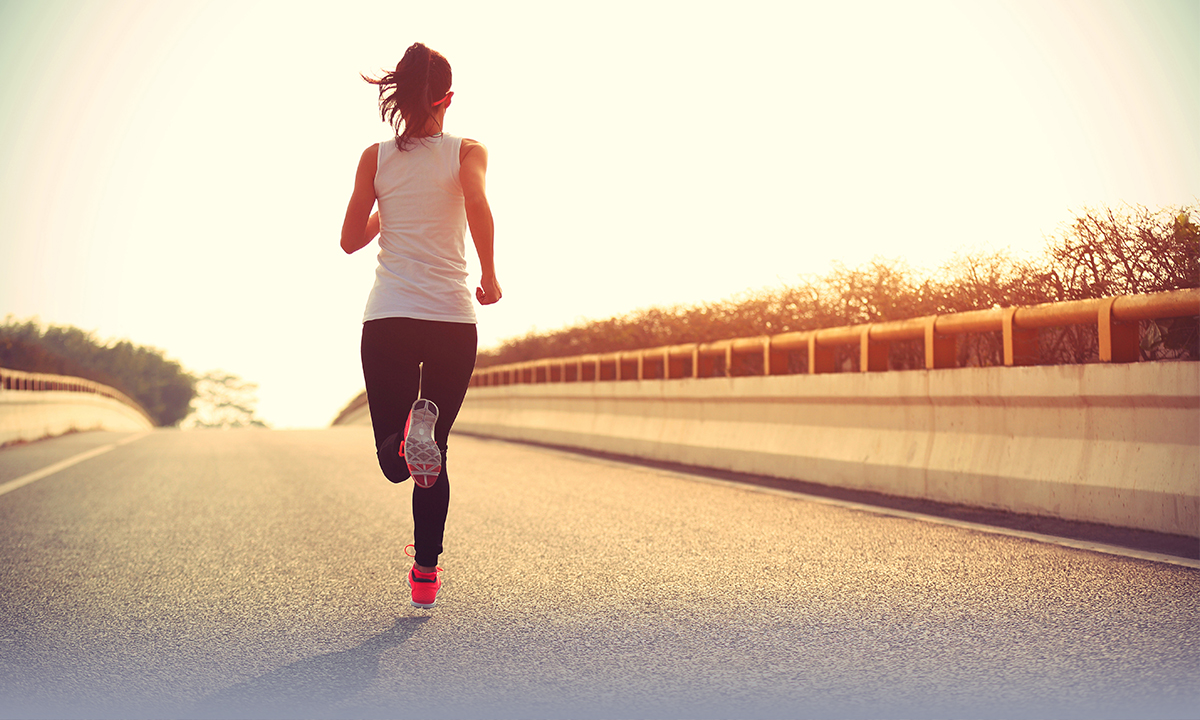
 For many of us, the mandatory shutdown of gyms and boot camps along with working from home over the last couple of months has made us very mindful about the amount of exercise we are getting – or more specifically – not getting. For those that see a run around the block as a quick and easy way to increase your step count and get your heart pumping, we’ve put together a quick guide on starting to run, and doing it without increasing your risk of developing pain or injury.
For many of us, the mandatory shutdown of gyms and boot camps along with working from home over the last couple of months has made us very mindful about the amount of exercise we are getting – or more specifically – not getting. For those that see a run around the block as a quick and easy way to increase your step count and get your heart pumping, we’ve put together a quick guide on starting to run, and doing it without increasing your risk of developing pain or injury.
Starting to run: What you need
The good news is that you normally don’t need anything extra special to start running, but it’s the few small things that make all the difference.
Running shoes
Your shoes are by far the most important running requirement. Your feet can take up to four times your body weight every time you take a step. Appropriate footwear will help support your feet and ankles and help propel you forwards efficiently – this is why as podiatrists we place so much emphasis on good running shoes!
Tip: Look at your current runners. How old are they? If they’re older than 12 months, consider getting a new pair. If they’re under 12 months, push the shoe at the area that cups the back of the heel. Does it easily bend down or does it feel firm? If it easily bends down, it may not be doing a great job of supporting your ankle – consider getting a new supportive pair (we love Asics and New Balance!).
Suitable socks
Know what the #1 thing is that we see at sporting events that stop new entrants in their tracks? Blisters. With approximately 250,000 sweat glands in the feet, blisters are often caused by the feet sweating inside the shoe and then rubbing. Having the right socks means they can wick moisture away from your feet, helping to prevent blisters.
Tip: No cotton socks for running. Cotton is very absorbent and spongy so it promotes not only blisters, but is an ideal environment for bacteria to breed. Opt for natural fibres such as merino wool or synthetic materials including polyester, nylon, acrylic, and the CoolMax that sports socks are made from.
Non-restrictive running gear
Finally, the last ‘biggie’ is wearing running gear that doesn’t restrict your movement. Clothing that is too tight or restrictive will affect your efficiency, making it feel harder to run and potentially leading to compensatory movement patterns.
Tip: This is where wearing proper running gear is really important – not only is running gear unrestrictive, but it is often also breathable, lightweight and doesn’t trap sweat.
Before you hit the road
Don’t forget to bring your drink bottle on longer runs and wear a hat and sunblock when running between 10am and 4pm. Now, you’ll need to prepare for a run by doing a warm-up. Setting a specific goal can also help you keep on track.
Warming up before a run
Perform a five-minute warm-up at least before you run, although ten minutes is ideal. Your warm-up can be as simple as brisk walking, a gentle cycle (if you have an exercycle), lunges, jumping jacks or high knee kicks. The goal is to make your body less stiff and more flexible to allow for better movement while getting your heart pumping to promote good circulation of oxygen throughout your body.
Set a realistic goal
Setting a realistic goal for every run is one of the keys to injury prevention. Is your first goal to run 2kms, alternating 500m with walking and running? Great. Stick to it and know that success isn’t going further than that or running the whole time – it’s completing what you’ve set out to do, without pain or injury, because you’re putting your safety first.
Maybe your first goal is to set a baseline for jogging or alternating jogging and walking for a kilometre. If that’s the case – great. You’ll have something to compare your progress against as you become a stronger runner. By sticking to realistic and measurable goals, you reduce the risk of overdoing it and causing pain or injury that may hinder your ability to keep running and progressing.
Track your distance
Whether you look up your route on Google Maps, use a tracking app, or have a Fitbit, make sure you are running a known and measured distance, and keep a note of this to track your progression.
Gradually increase your running distance and speed
The key word here is gradually. Look up the common running injuries and one thing you’ll see they all have in common is going too hard, too fast. Your body needs time to adjust to the activity and to grow stronger – as every run will be strengthening the key muscles involved in running like the glutes, the quads and hip flexors, the abdominals, the hamstrings and the calves. We don’t doubt that you may be able to run 10km on your first run, but that doesn’t mean that you should.
After your run
Cool-down
You know that next-day-soreness that you feel after a workout? That can be reduced, or prevented, by having a cool-down after every run. Cool-downs enhance your recovery, allowing your heart rate to return to its resting rate gradually, instead of abruptly as it would if you just stopped moving completely. Cooling down also helps prevent blood from pooling in your legs by continuing to promote your circulation.
Cool-down by continuing to walk, cycle or generally move for 5 minutes after your run, and then spend another 5 minutes on stretching. This means giving all those key muscle groups that we mentioned earlier a good stretch!
Set your next goal, if you haven’t already
You’ll feel the most motivated immediately after your run, so take advantage of it and set your next goal – the distance, whether you’ll be running the entire time or alternating, the route you’ll take, and when you’ll do it. Don’t forget to schedule rest days!
Refuel and rehydrate
Energy and rehydration are crucial for optimal recovery – and to get the most muscle-building benefits from your run. Opt for plenty of water immediately after your run and make a conscious effort to remain hydrated for the rest of the day.
When it comes to food, start with a snack containing both carbohydrates and protein within 30 minutes of your run. This can be a wholesome muesli bar, fruit with yoghurt, toast with peanut butter – or fruit and milk or yoghurt smoothies are always a goodie. Don’t forget to have a meal within a few hours following your run.
Final advice: Don’t ignore niggles
If you start running and notice any pains or niggles, consider whether you can modify any potential contributing factors – can you modify the distance, your speed, the terrain, are you performing an adequate warm-up or cool down? If the pain persists, get some advice from our experienced podiatry team here or call us on 1800 FOOT DR


